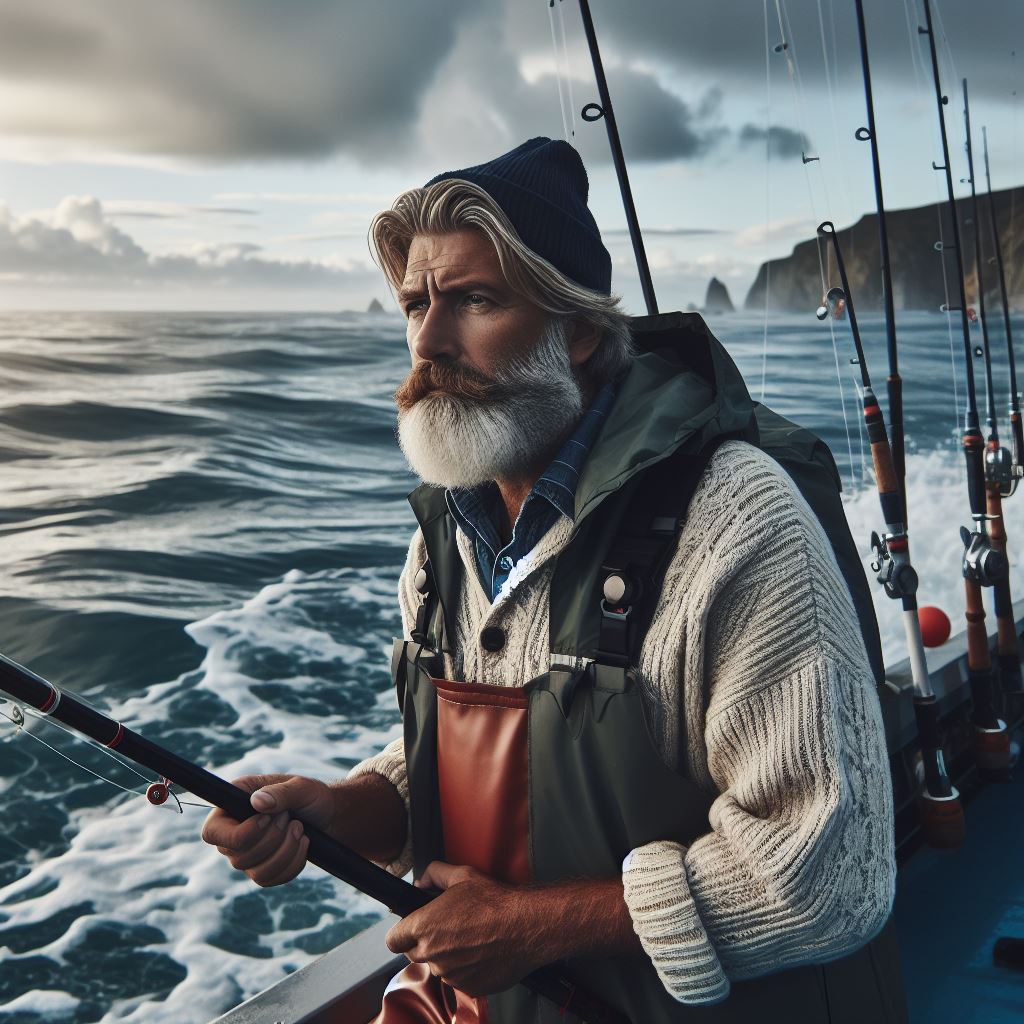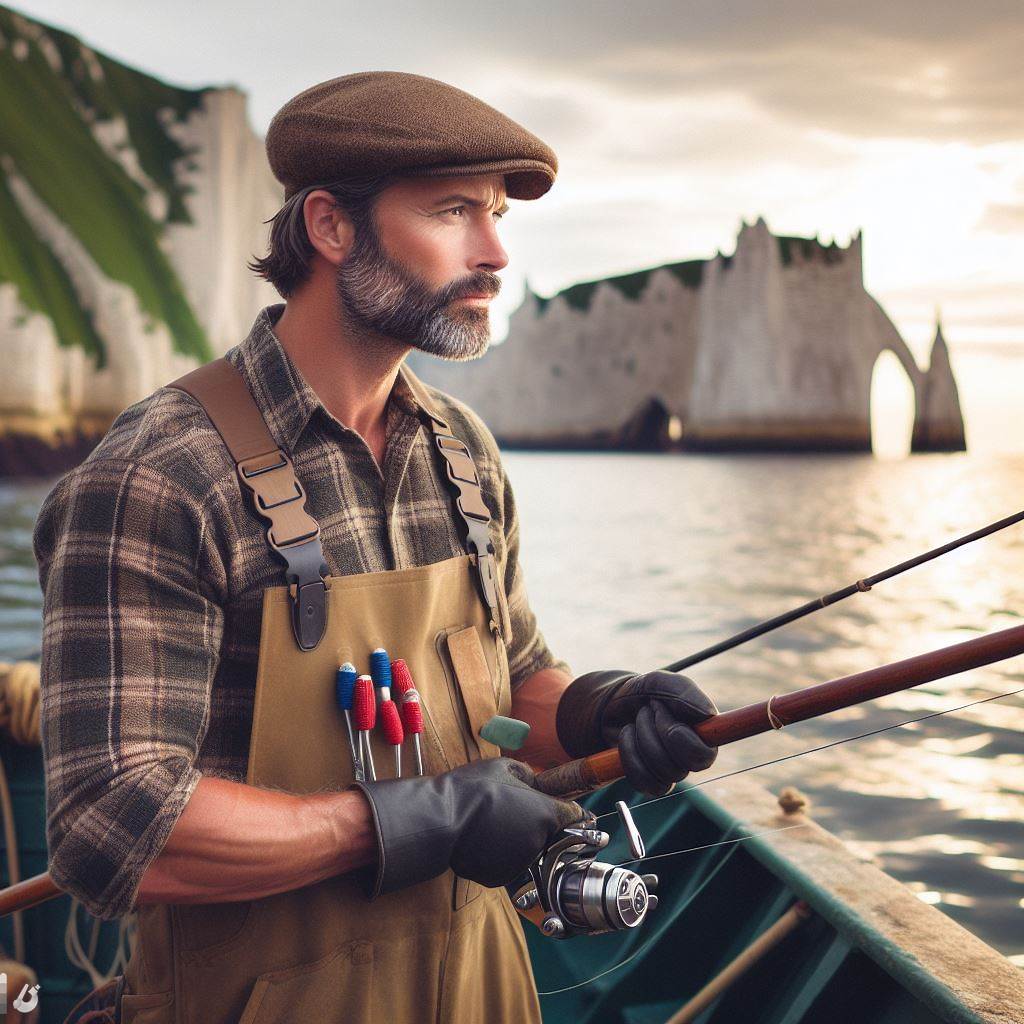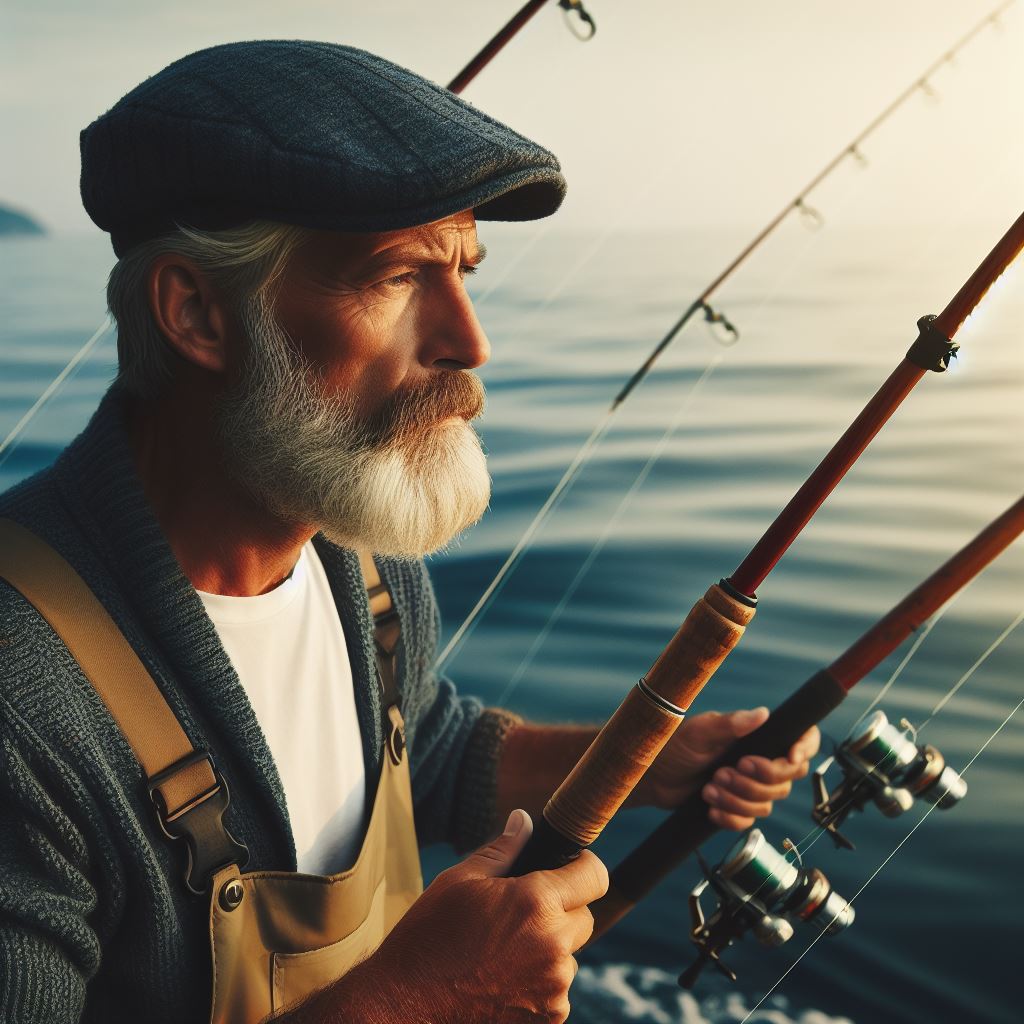Introduction
Fishing gear empowers UK fishermen, sustaining their livelihoods and bolstering the economy. Technological advancements revolutionize the industry, enhancing efficiency and sustainability.
The significance of fishing gear for UK fishermen cannot be overstated; it is the foundation of their trade, enabling navigation of treacherous waters and capturing abundant fish species.
Survival and economic prosperity hinge on proper gear; without it, they face jeopardy. Constant innovation within the industry reflects adaptation to changing environments and increased regulations.
Sonar technology, integrating underwater sound waves, allows fishermen to locate fish accurately, maximizing catch and minimizing impact on the marine ecosystem.
This informs decisions on where to cast nets, saving time and resources.
Advancements include lightweight, durable materials for gear—stronger nets, lines, and hooks withstand harsh weather conditions, targeting larger, more valuable fish.
These materials reduce gear loss and waste, contributing to sustainable fishing practices.
Fundamental to the livelihoods of UK fishermen, fishing gear’s modern advancements, like sonar technology and durable materials, transform the industry.
These innovations empower fishermen, ensuring enduring success.
Read: Aquaculture Technician: Environmental Impact
Overview of Traditional Fishing Gear
Description of traditional fishing methods and equipment used in the UK
- One traditional fishing method used in the UK is longlining, which involves setting a long line with baited hooks.
- Gillnets are another common type of traditional fishing gear, consisting of a net wall held vertically by floats and weights.
- Trawling is a method where a large net is towed behind a fishing vessel to catch fish.
- Pot fishing is also used, which involves placing pots or traps on the seabed to catch crustaceans.
- Traditional fishing gear in the UK often includes various types of fishing nets and lines.
- Fishermen also use hand-operated fishing reels, rods, and hooks to catch fish.
Mention of the limitations and challenges faced by fishermen using traditional gear
- Traditional fishing gear can be labor-intensive and time-consuming, requiring manual handling and operation.
- Fishing with traditional gear may result in bycatch, unintentionally catching non-target species.
- Traditional fishing methods often require extensive knowledge and experience to be effective.
- In adverse weather conditions, using traditional gear can be hazardous and challenging for fishermen.
- The limited-scale of traditional fishing gear may restrict the amount and variety of fish that can be caught.
- Overfishing and environmental concerns have prompted stricter regulations on traditional fishing gear.
- The cost of maintaining and replacing traditional fishing equipment can be a financial burden for fishermen.
- Competing with modern fishing techniques, traditional gear may be less efficient and less productive.
- Traditional gear may have a higher impact on the marine environment, such as seabed disturbance.
- The use of traditional gear may limit fishing opportunities to specific areas or seasons.
In essence, traditional fishing gear in the UK encompasses various methods and equipment such as longlining, gillnets, trawling, and pot fishing.
However, fishermen face challenges like labor-intensiveness, bycatch, adverse weather, and limited effectiveness.
Stricter regulations, cost burdens, and environmental impact also affect the use of traditional gear.
Read: Navigating UK Aquaculture: Tech Advancements
Evolution of Fishing Gear in the UK
Introduction of modern fishing gear in the UK
Fishing has been an integral part of UK’s culture and economy for centuries. Over time, fishing gear has evolved significantly, revolutionizing the industry.
Personalized UK Career Consulting
Receive tailored career guidance designed just for you. Get actionable steps and expert support to boost your career in 1-3 days. Take control of your career now.
Get StartedTimeline of significant advancements in fishing gear technology
1. Introduction of synthetic fishing lines
In the early 1900s, traditional fishing lines made from natural materials like silk and horsehair were gradually replaced by synthetic alternatives.
2. Development of lightweight fishing rods
In the 1950s, fiberglass and later carbon fiber fishing rods were introduced, offering anglers flexibility, durability, and improved casting performance.
3. Introduction of sonar technology for fish detection
During the 1960s, sonar technology became widely used in commercial fishing, revolutionizing the way fishermen detected fish beneath the water’s surface.
4. Implementation of GPS systems for efficient navigation
In the late 1980s, Global Positioning System (GPS) technology found its way into fishing vessels, enabling precise navigation and improved fishing efficiency.
5. Adoption of electric reels for deep-sea fishing
In recent years, deep-sea fishermen have embraced electric reels, easing the physical strain and enabling them to target larger fish in deeper waters.
Impact of modern fishing gear on the fishing industry in the UK
The introduction of modern fishing gear has had a profound impact on the fishing industry in the UK.
Synthetic lines boost strength, aiding in handling larger fish in harsh marine conditions. Lightweight rods enhance casting, reaching new areas for expanded catch potential.
Sonar tech improves fish detection efficiency, reducing search time. GPS ensures accurate navigation, enhancing safety and productivity.
Electric reels ease deep-sea fishing, targeting previously unreachable species.
Generally, these advancements ensure a prosperous future for UK fishermen.
Read: Species Diversity in UK Aquaculture Tech

Explore Further: Fishermen’s Health: Staying Safe at Sea in the UK
Modern Fishing Gear: Unveiling the Toolkit of UK Fishermen
In the dynamic realm of UK fishing, staying ahead means embracing a spectrum of cutting-edge tools that redefine the angler’s experience.
Let’s delve into the intricacies of the modern fishing gear employed by UK fishermen, exploring everything from advanced spinning reels to safety essentials.
Fishing Reels
- Advanced Spinning : Spinning reels have evolved, offering anglers lightweight, efficient tools that enhance casting distance and accuracy for modern fishing..
- Baitcasting : “Baitcasting reels redefine precision, offering anglers unparalleled accuracy and crucial control for success in diverse UK waters.
- Fly Fishing : Specialized tools are crucial in fly fishing; fly fishing reels, with their finesse, play a pivotal role in precise fly presentations. Anglers, targeting elusive trout or salmon, can’t overstate the significance of these reels.
Angling rod
- Diverse Rod Types: Fishing enthusiasts in the UK choose rods based on their goals, like finesse or tackling larger game, within the diverse world of spinning to casting options.
- Carbon Fiber : Carbon fiber technology transformed fishing rods, providing strength and sensitivity. Discerning anglers prefer these rods for unmatched performance in freshwater or saltwater.
- Telescopic: Portability meets functionality with telescopic fishing rods. A boon for on-the-go anglers, these rods can be easily transported, allowing for spontaneous fishing adventures without compromising on performance.
Fishing Lines
- Braided : Strength, sensitivity, and minimal stretch – these are the hallmarks of braided fishing lines. As UK fishermen seek to conquer challenging environments, braided lines provide the resilience required to tackle formidable opponents.
- Fluorocarbon: Stealth becomes paramount underwater, and fluorocarbon fishing lines rise to the occasion. Virtually invisible in the water, these lines maintain their strength and durability, making them a staple in the modern angler’s arsenal.
- Monofilament Lines: Versatility is the key attribute of monofilament lines. With applications ranging from freshwater to saltwater fishing, these lines adapt to various techniques and scenarios, earning their place as dependable fishing companions.
Electronic Fish Finders
- How Fish Finders Work: Dive into the technology behind fish finders. Operating on sonar principles, these devices emit signals into the water, interpreting the echoes to pinpoint the location of fish beneath the surface.
- Advantages of Fish Finders: Efficiency and sustainability take center stage with the integration of fish finders in modern fishing. By precisely locating fish, these devices optimize catch rates, ensuring the continued success of the trade.
- Diverse Fish Finder Types: The market offers a diverse array of fish finders, each catering to specific angling needs. From handheld devices for the solo angler to advanced systems for commercial operations, the choices are as varied as the waters they navigate.
Navigation and Safety Equipment
- GPS Systems: Navigation is a critical aspect of successful fishing, especially in the expansive waters of the UK. GPS systems have become indispensable tools, providing precise location data that aids in charting courses and locating fishing hotspots.
- Advantages of GPS: GPS not only navigates; it boosts efficiency, enabling anglers to optimize time on water, a game-changer for exploring or revisiting spots.
- Safety Essentials: UK fishermen prioritize safety with advanced gear like life jackets and emergency beacons, ensuring each expedition is successful and secure.
In this exploration of modern fishing gear, it’s evident that UK fishermen are equipped with a toolkit that blends tradition with innovation.
Your Dream Job Starts with a Perfect CV
Get a tailored CV and cover letter that captures your unique strengths and stands out in your industry. Let us help you make an unforgettable first impression.
Get StartedEach piece serves a purpose, contributing to the efficiency, sustainability, and enduring success of a trade that has weathered the tides of time.
As the waters evolve, so does the toolkit, ensuring that the legacy of UK fishing remains vibrant for generations to come.
Read: Breeding Techniques: UK Aquaculture Insights
Delve into the Subject: Foresters’ Tools and Equipment Guide
Uncover the Details: Forestry Apprenticeships in the UK
Conclusion
Significance of Modern Fishing Gear for UK Fishermen
Modern fishing gear stands as the cornerstone of the UK fishermen’s toolkit, revolutionizing their trade.
Advancements Boosting Efficiency and Productivity
- Innovations like sonar technology enhance fishermen’s ability to locate and catch fish effectively.
- Lightweight and durable materials contribute to gear longevity, reducing the need for frequent replacements.
- The integration of technology and materials ensures a sustainable and eco-friendly approach to fishing practices.
- Improved efficiency boosts yields, benefiting UK fishermen and enhancing the overall fishing industry.
Appreciating Contributions to Fishermen’s Livelihood
- Readers are urged to recognize the pivotal role modern fishing gear plays in sustaining the livelihoods of UK fishermen.
- By enhancing catch rates and minimizing environmental impact, these advancements secure a prosperous future for the fishing community.
- The blog emphasizes the need for ongoing support and investment in modern fishing gear to ensure continued success.
Modern fishing gear actively catalyzes positive change in the UK fishing industry, transforming from equipment to a driving force.
Its impact extends beyond the waters, influencing the economic well-being of fishermen and the sustainability of marine ecosystems.
Let’s appreciate and support the ongoing advancements that contribute to a thriving and responsible fishing trade in the United Kingdom.
[E-Book for Sale]
500 Cutting-Edge Tech Startup Ideas for 2024 & 2025: Innovate, Create, Dominate
$19.99 • 500 Tech Startup Ideas • 62 pages
You will get inspired with 500 innovative tech startup ideas for 2024 and 2025, complete with concise descriptions to help you kickstart your entrepreneurial journey in AI, Blockchain, IoT, Fintech, and AR/VR.




